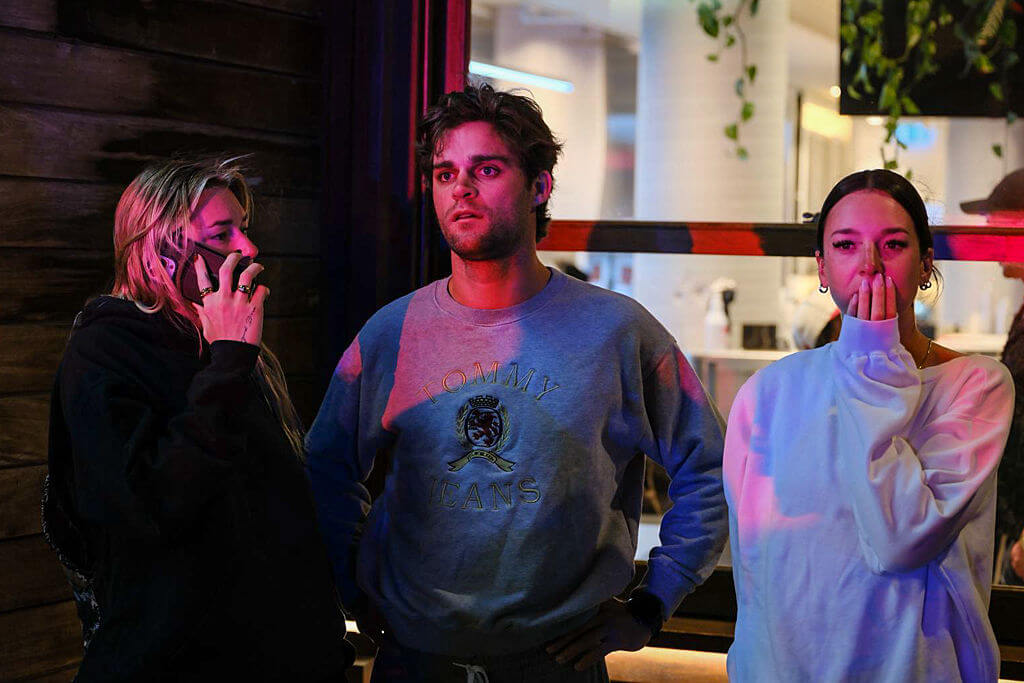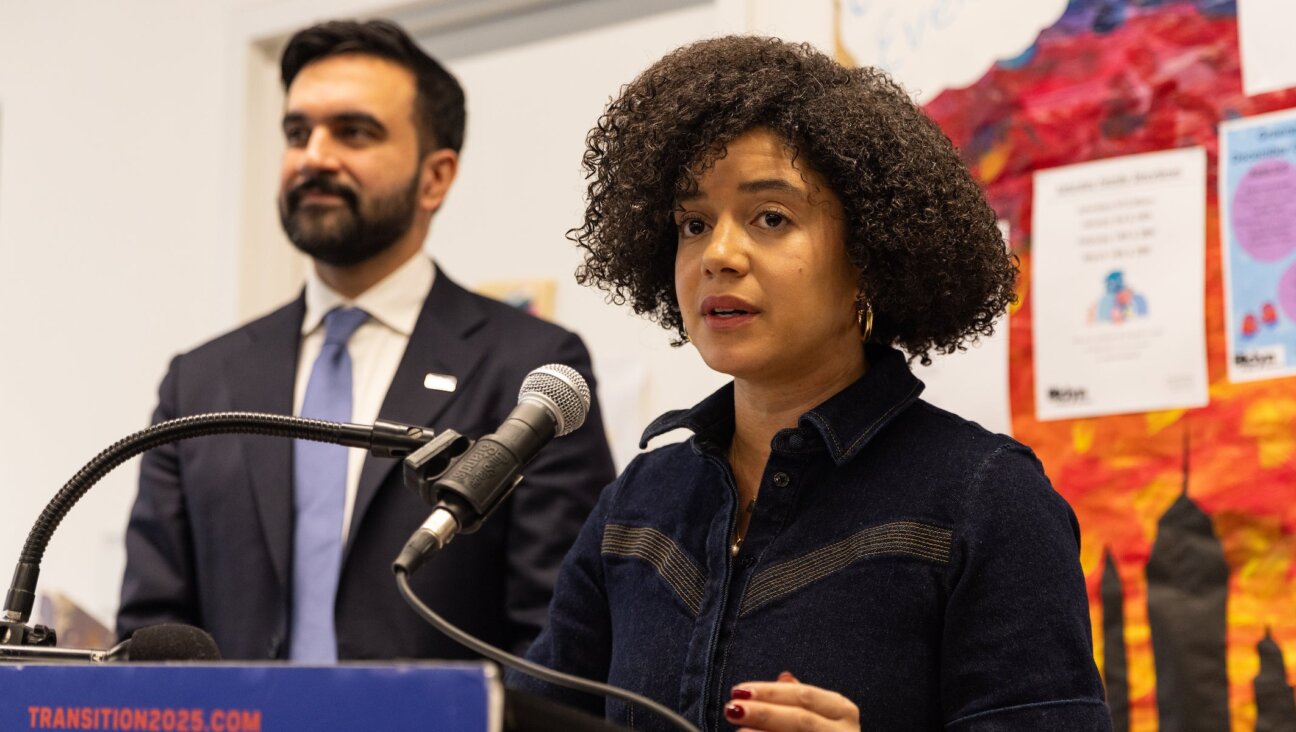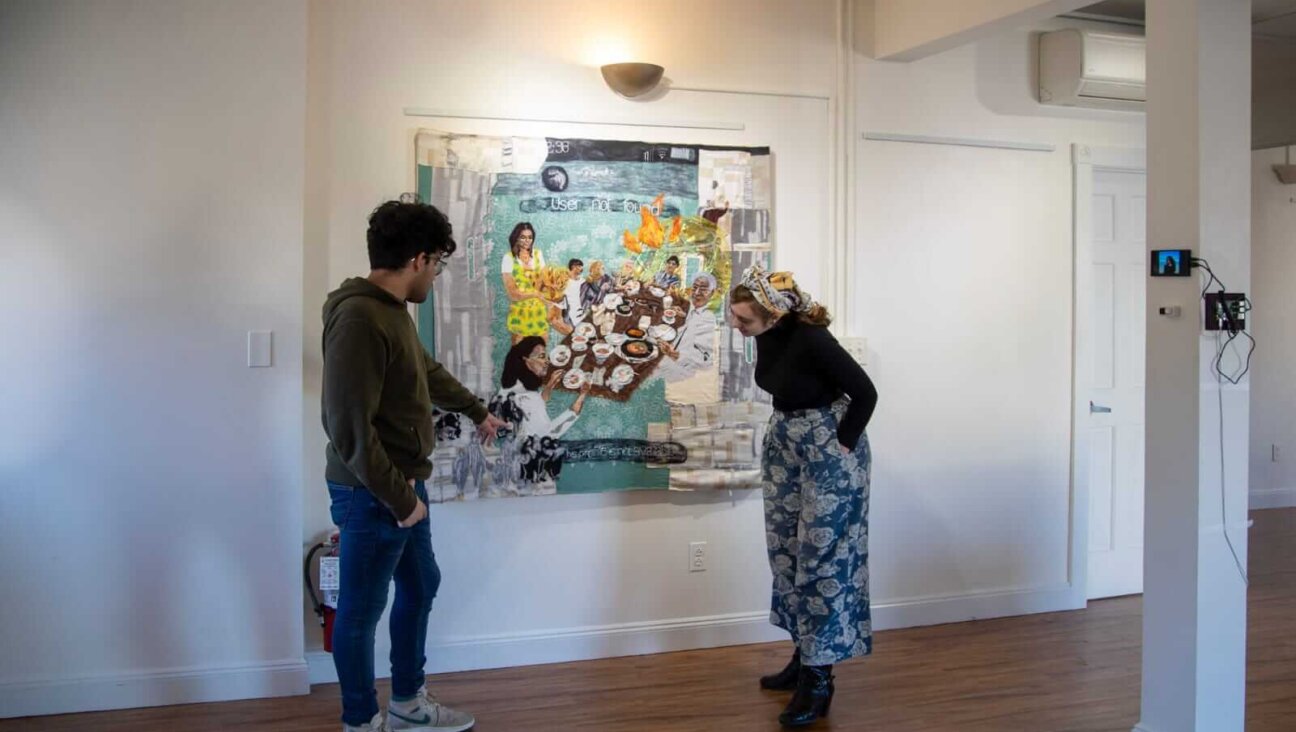Q&A: Elinor Carucci on Motherhood and Photos

Graphic by Angelie Zaslavsky
In “Born,” a solo exhibition showing at the Sasha Wolf Gallery in New York through November 5, photographer Elinor Carucci presents intimate, at times unsettling, but always unflinchingly candid portraits of herself and her twin children. Born in Israel in 1971, Carucci started taking photographs at the age of 15. She moved to New York after graduating from Jerusalem’s Bezalel Academy of Art and Design, and has since forged overlapping careers in visual art and commercial photography. Her photographs, often of herself or family members, have been exhibited across three continents (another solo exhibition, “Love In Spite,” is running at Tel Aviv’s Tavi Art Gallery through October 7); her commissions have appeared in The New York Times Magazine, The New Yorker and Esquire, among other publications. She spoke to The Arty Semite about the self-reflective and personal nature of her work.
Akin Ajayi: “Born” presents images of motherhood very much at odds with our internalized concept of maternal bliss. Are these general statements or a meditation on personal experience?
Elinor Carucci: It is both, neither just one nor the other. The series came from my experiences of becoming a mother. They reflect the conflicting emotional states of motherhood, the relief and joy set against the exhaustion and frustration, the tiredness. They are certainly commentary on the idealized image of motherhood, in art and in popular culture. I wanted to show a more complicated picture. I certainly wasn’t prepared for motherhood; it wasn’t a negative experience, but certainly a very complex one.
Over the years, your photography has become more insular. How has motherhood changed your perceptions about life, and how have these filtered into your photography?
Firstly, you realize how quickly time flies; you want to capture, not to lose those moments when the kids are growing up so quickly. I started to focus more, to pay attention to the moment. Of course, this is something that happens to all parents, not just visual artists… you feel more intensely your age, the passage of time. Beyond this, the sensation of a new connection, one that I hadn’t experienced previously in life. It’s not there now, but for a while we were one, it was so intense, sharing every emotional state with them. It certainly influenced my work.
Child psychoanalyst Melanie Klein wrote vividly about projection in infants, the notion of infants shifting their sense of helplessness into their parental figure, who then takes psychic responsibility for processing these seemingly uncontrollable emotional states. Is there something of this in your unsentimental photography of your children?
This certainly informs the pictures. Firstly, I wanted to photograph [my children] because this is how I work: I take photographs from within my life. I photograph what I see and feel. Talking about my dialogue with the viewers, it might feel uncomfortable at first. But I think that ultimately, my intention with the photographs is to make the viewer feel more comfortable with the complexity of childhood and parenthood. The photographs are not intended to provoke; it is about sharing this moment, this honesty.
Vulnerability is very much at the fore in this series. How do you negotiate the challenge of representing your family’s inner world as honestly as you portray yours?
Firstly, I have an impulse to take photographs from intimate moments in my life… I find it therapeutic. But at the same time, the pictures talk about universal themes. I try to develop these themes from my own life. As for my family, it is obviously my interpretation of their lives. They have a huge involvement in the work, but I only have my point of view. I don’t think that I reflect an objective, complete reality, but rather my reality, my perception of our lives, who they are to me.
You’ve lived in the United States for many years. Do the challenges of expatriate life emerge in your work?
It’s complicated, an almost daily challenge being away from Israel, even after 16 years… I’ll always be an immigrant in America, [but] my culture will never be American. I think this tension emerges, but in a very subtle way. My recent work is much more outdoors, following my kids [now 7] in the street… I think for the first time I can accept America as my home. My children are American, and I feel like I’m following them with my camera, into America….















